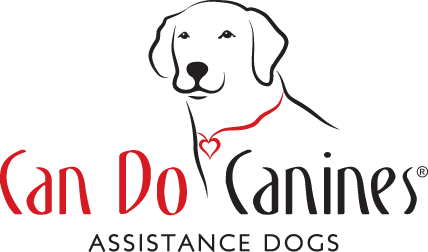Cue: Fix It
If the leash becomes tangled between the dog's feet, the dog will lift the trapped leg and step over the leash in order to remove the tangle. The dog does not need the handler to move the leash.
Impact on the dog's future work:
For some clients, particularly those with mobility limitations, reaching down to untangle a leash from their dog's feet might not be physically possible. The "fix it" cue provides an alternative means of addressing this issue without requiring physical exertion from the handler.
Cue: Go Mat
The dog sends to a stationary target on verbal cue only and lays down on the target. The dog should look for the mat and target and remain on it with their front feet. "Stay" is implied; requires a release or next cue.
Impact on the dog's future work:
Clients use the "Go mat" cue in various situations. Some of the places a client may use the go mat cue include doctor visits, work, at home, away from the door when visitors arrive, etc. The go mat cue allows the dog to stay in position away from the client and promotes relaxation. Teaching the dog to "do nothing" while on the mat helps them relax and remain calm even in distracting environments.
Cue: Get Dressed
The dog will move their nose into their collar, cape, and other equipment without a lure and stay still while they are fastened. Handler does not need to reach forward or bend over; handler can remain seated.
Impact on the dog's future work:
It's important the dog comes towards the equipment and easily puts on their collar, head collar, and cape. Some clients are physically unable to bend or reach forward to put the dog's equipment on. Some clients may have the dog stand on a platform or step onto a wheelchair footplate to get the dog into their equipment.
Cue: Heel & Side
Perch training is used to shape the dog to pivot to left (heel) and right (side) of the handler with a verbal cue only. The dog learns to never cross behind the handler and to remain in the parallel position. This is not a cue to begin or maintain walking.
Impact on the dog's future work:
Heel and side are important cues for the dog's future work with a client because they allow the client to easily move the dog to one side or the other on a verbal cue. While the client typically has one side they prefer the dog to be on, the dog must still be proficient working in both heel and side. The dog should be able to do the heel and side cues from a verbal request only, while the handler is standing or sitting in a chair, as some of our clients use wheelchairs and scooters.




